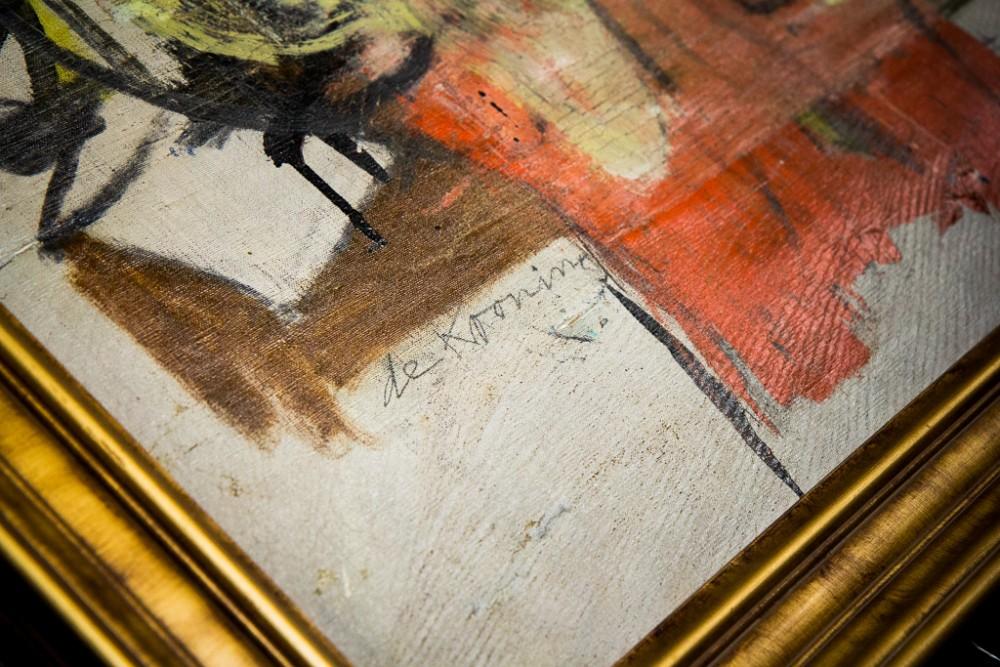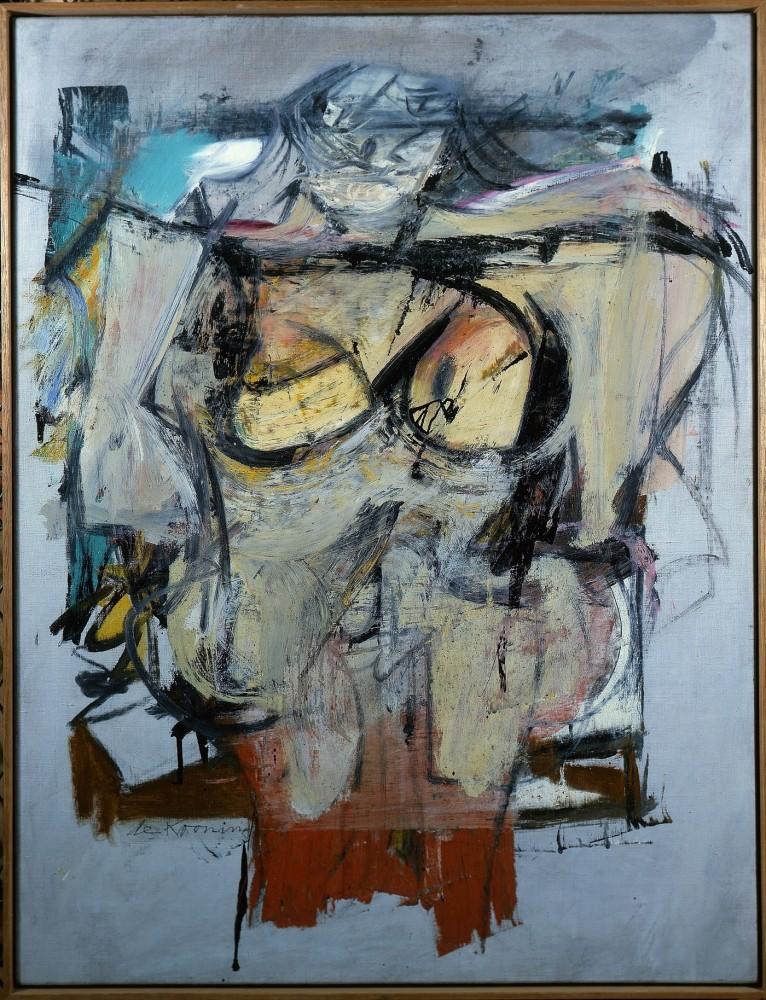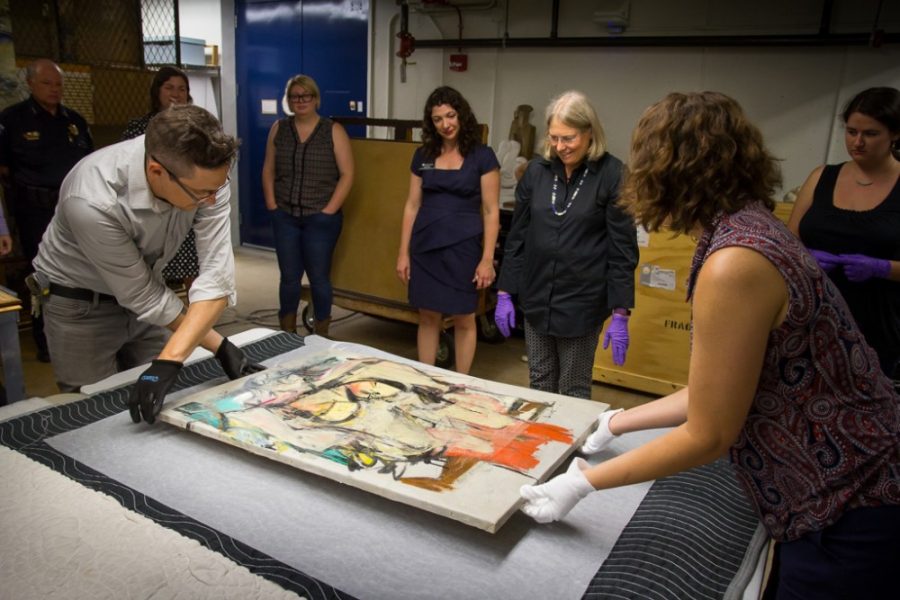Art crime is woven throughout museums, galleries and private collections alike. From forgeries to the theft of its most valuable painting, the University of Arizona Museum of Art has an art crime history all of its own.
The art museum’s Curator of Exhibitions Olivia Miller gave a community talk called “Crimes Against Art” about incidents at the museum at the Murphy-Wilmot Library on Dec. 6.
The Forgeries
According to Miller, the museum’s curator discovered in the late 1970s that Wassily Kandinsky’s painting “Ruhe” was a forgery. The director happened upon a poster reproduction of “Ruhe,” which did not look like the original and began to inspect museum files to research its provenance.
It turned out that parts of the painting’s provenance was fictional. The original was still part of a private collection belonging to Nathan Cummings, making the one hanging in the museum a forgery.
After the Kandinsky painting was found to be a forgery, the curator began tracking all the other pieces sold by the same gallery from which it had been bought. Miller said a sculpture called “Dancer Posing” by Edgar Degas was also discovered to be a fake after being inspected by experts at Harvard.
“The conservators called the sculpture ‘a poor copy of a copy,’” Miller said. “It was not even a good forgery.”
The two falsified artworks were gifts from Edward Gallagher Jr.

According to the art museum’s website, Gallagher Jr. donated about 200 “world-class modern art” pieces to the museum in honor of his son who passed away.
Miller said the Kandinsky and Degas artworks were sold to Gallagher Jr. by a gallery that had supplied him many pieces, the majority of which later turned out to be forgeries.
She mentioned that a preparatory sculpture by Henry Moore is currently not on display, as it is from the same untrustworthy gallery and the authenticity is still unknown.
“[These forgery discoveries] were quite unfortunate because the gallery owner and Gallagher had been friends since high school,” Miller said.
It was found out that the gallery owner established an elaborate scheme. Apparently, he had forged letters from a non-existent corporation owner and created a shell company, all to deceive Gallagher Jr. and knowingly sell him forged artwork, according to Miller.
“I guarantee that there are museums right now that have forgeries on view and just don’t know it yet,” Miller said. “In 2016, half of a museum in France happened to be fake.”
Karen Barber is an adult services librarian who has taken part in the organization of the art talks since 2012. Apparently, the first talk they ever hosted was about the Gallagher collection. Now, seven years later, the talk is about how Gallagher was duped.
“I had no idea that the [UA] had all those forgeries,” Barber said after the talk. “I think it’s fascinating that [the museum is] being so open about the forgeries.”
The Stolen Painting
During the talk, Miller’s re-told of the story of Willem de Kooning’s “Woman-Ochre” painting that was stolen over 30 years ago.
According to UA Police Chief Brian Seastone, on the morning of Nov. 29, 1985, a man and a woman entered the museum. Police believe that the woman distracted the security guard while the man went up to the second floor.
“The security guard was suspicious after they left and immediately went upstairs to check on the artworks,” Miller said. “He discovered that the painting had been cut from its frame shortly after they left.”
It wasn’t until 2009 when Lauren Rabb became the curator of art at the UA art museum that “Woman-Ochre” came back into the spotlight. According to Rabb, she was always interested in art theft.
“Art crime fascinates me because while it’s usually considered a victimless crime, at the same time it’s a crime against humanity,” Rabb said in an email. “Humanity is deprived of that work of art — of the ability to experience it anymore.”
According to Rabb, awareness about the stolen de Kooning painting needed to spread if it were ever to be returned to the art museum. Rabb contacted the FBI to remind them about the robbery and to inquire about the status of their investigations.

“It seemed like a good time to reopen the case and make sure there was publicity around the 30-year anniversary of the theft,” Rabb said.
Miller said the museum hosted an event titled “Out of the Vault – Art Crime,” prompted by Rabb in 2015. It was about past forgeries, “Woman-Ochre” and the FBI’s progress on the stolen painting case.
This talk renewed interest toward the unsolved disappearance within the community. According to Miller, the event received international press attention and an article was written about the stolen painting a few weeks later by Anne Ryman for the Arizona Republic.
RELATED: UA film students brings the story of the Women Ochre painting to the big screen
“On Aug. 3, 2017, we got a call that changed our lives,” Miller said.
David Van Auker, an owner of an antique store in New Mexico, called the art museum to say that he believed he found the stolen de Kooning after he researched the painting he bought and came across Ryman’s article.
“At first, I was cautious about getting excited,” Miller said. “It wasn’t that I didn’t believe him, but we wanted more proof, especially after discovering so many other forgeries in the museum.”
Finally, it was found that Van Auker was indeed in possession of the long-lost painting. According to Miller, if it weren’t for the transparency and educational reach of the “Out of the Vault – Art Crime” event, Ryman’s article wouldn’t have been written.
“Museums are public institutions,” Miller said. “The public should be aware of what goes on inside them. Keeping the public informed is what helped us recover ‘Woman-Ochre.’”
Today, “Woman-Ochre” is being tested and repaired at the Getty Center in Los Angeles. Miller expects that the art museum will get to welcome the painting back home in Spring of 2021.
Over 30 years after the crime, UA Museum of Art employees and community members alike celebrate the painting’s recovery.
“Art crime is a real and current issue,” Miller said. “Just recently, a couple paintings were burglarized in Germany. For [the art museum], it’s about finding a balance between visitor experience and painting safety.”
Follow Sunday Holland on Twitter









